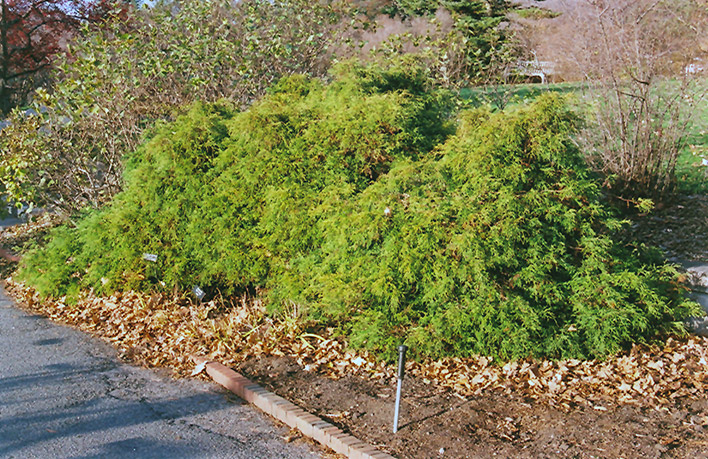Plantfinder
siteadmin2023-06-04T13:10:09-03:00
Dwarf Threadleaf Falsecypress
Chamaecyparis pisifera 'Filifera Nana'
Height: 8 feet
Spread: 7 feet
Sunlight:
![]()
![]()
Hardiness Zone: 4a
Other Names: Japanese Falsecypress, Sawara Falsecypress
Description:
Known as the Threadleaf falsecypress because of the fine, almost string-like foliage, giving an extremely fine texture; a compact variety, ideal for garden use where a fine texture is valued
Ornamental Features
Dwarf Threadleaf Falsecypress is a dwarf conifer which is primarily valued in the landscape or garden for its ornamental globe-shaped form. It has dark green evergreen foliage. The threadlike sprays of foliage remain dark green throughout the winter.
Landscape Attributes
Dwarf Threadleaf Falsecypress is a multi-stemmed evergreen shrub with a more or less rounded form. It lends an extremely fine and delicate texture to the landscape composition which can make it a great accent feature on this basis alone.
This is a relatively low maintenance shrub, and should not require much pruning, except when necessary, such as to remove dieback. It has no significant negative characteristics.
Dwarf Threadleaf Falsecypress is recommended for the following landscape applications;
- Accent
- Vertical Accent
- Mass Planting
- Hedges/Screening
- General Garden Use
Planting & Growing
Dwarf Threadleaf Falsecypress will grow to be about 8 feet tall at maturity, with a spread of 7 feet. It tends to fill out right to the ground and therefore doesn't necessarily require facer plants in front, and is suitable for planting under power lines. It grows at a medium rate, and under ideal conditions can be expected to live for 50 years or more.
This shrub does best in full sun to partial shade. It prefers to grow in average to moist conditions, and shouldn't be allowed to dry out. It is not particular as to soil type, but has a definite preference for acidic soils. It is highly tolerant of urban pollution and will even thrive in inner city environments. Consider applying a thick mulch around the root zone in winter to protect it in exposed locations or colder microclimates. This is a selected variety of a species not originally from North America.
A NetPS Plant Finder tool

